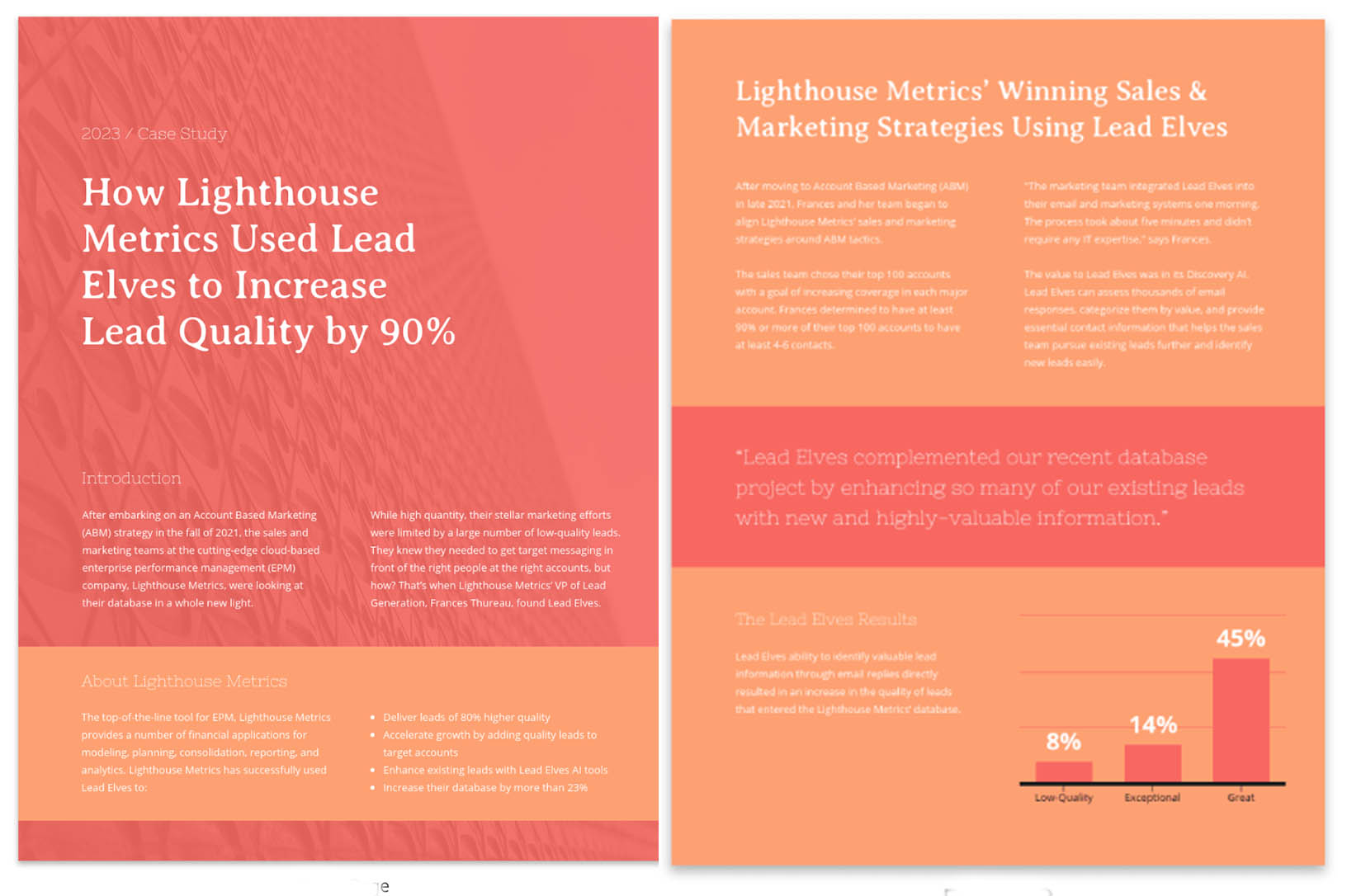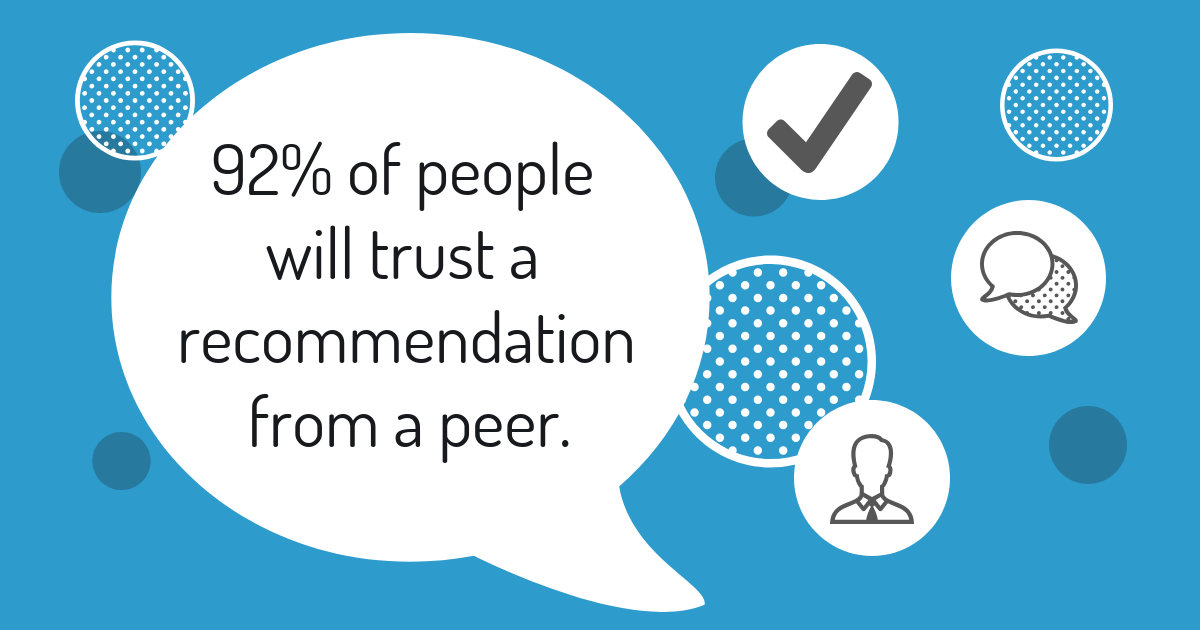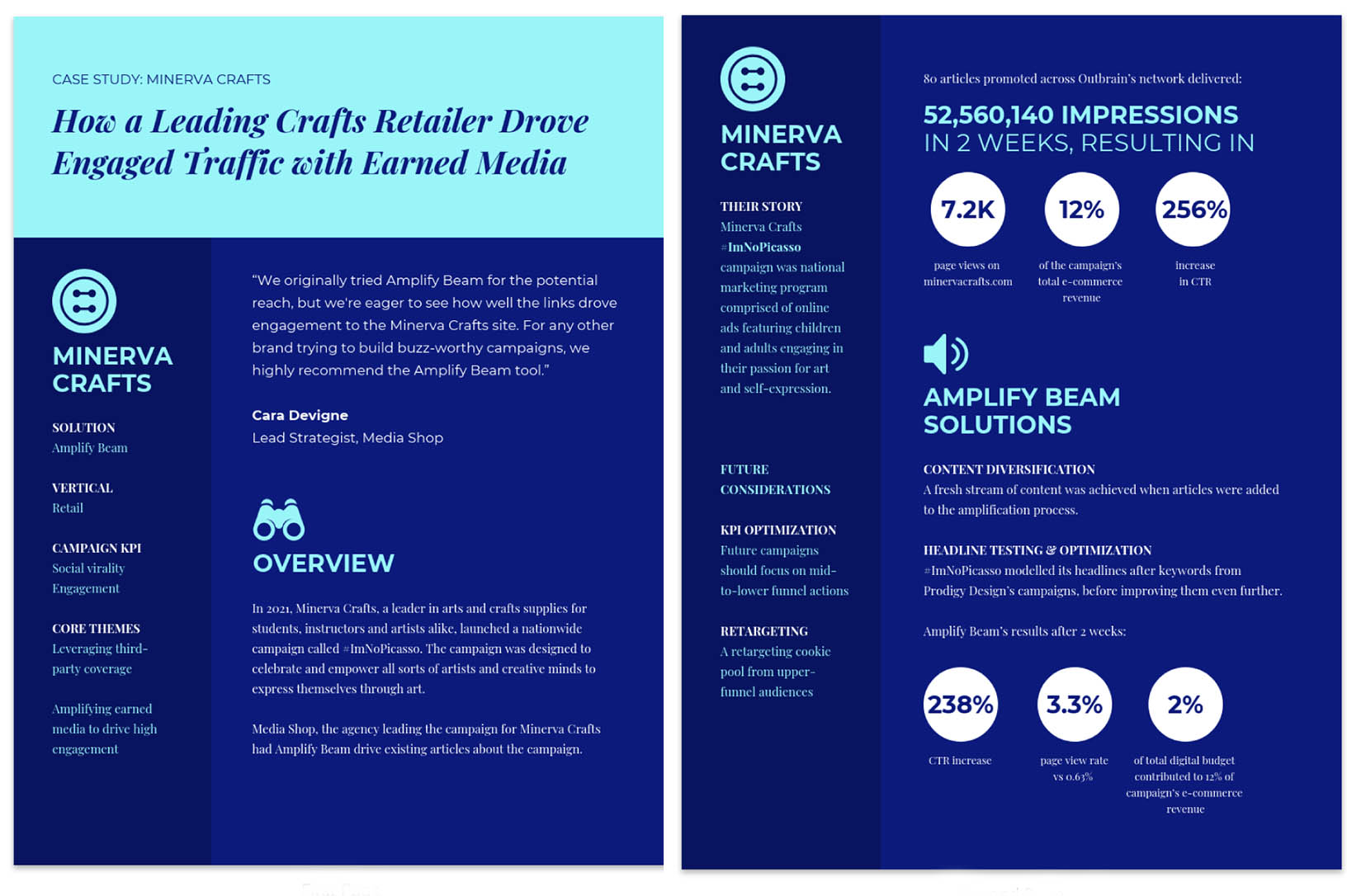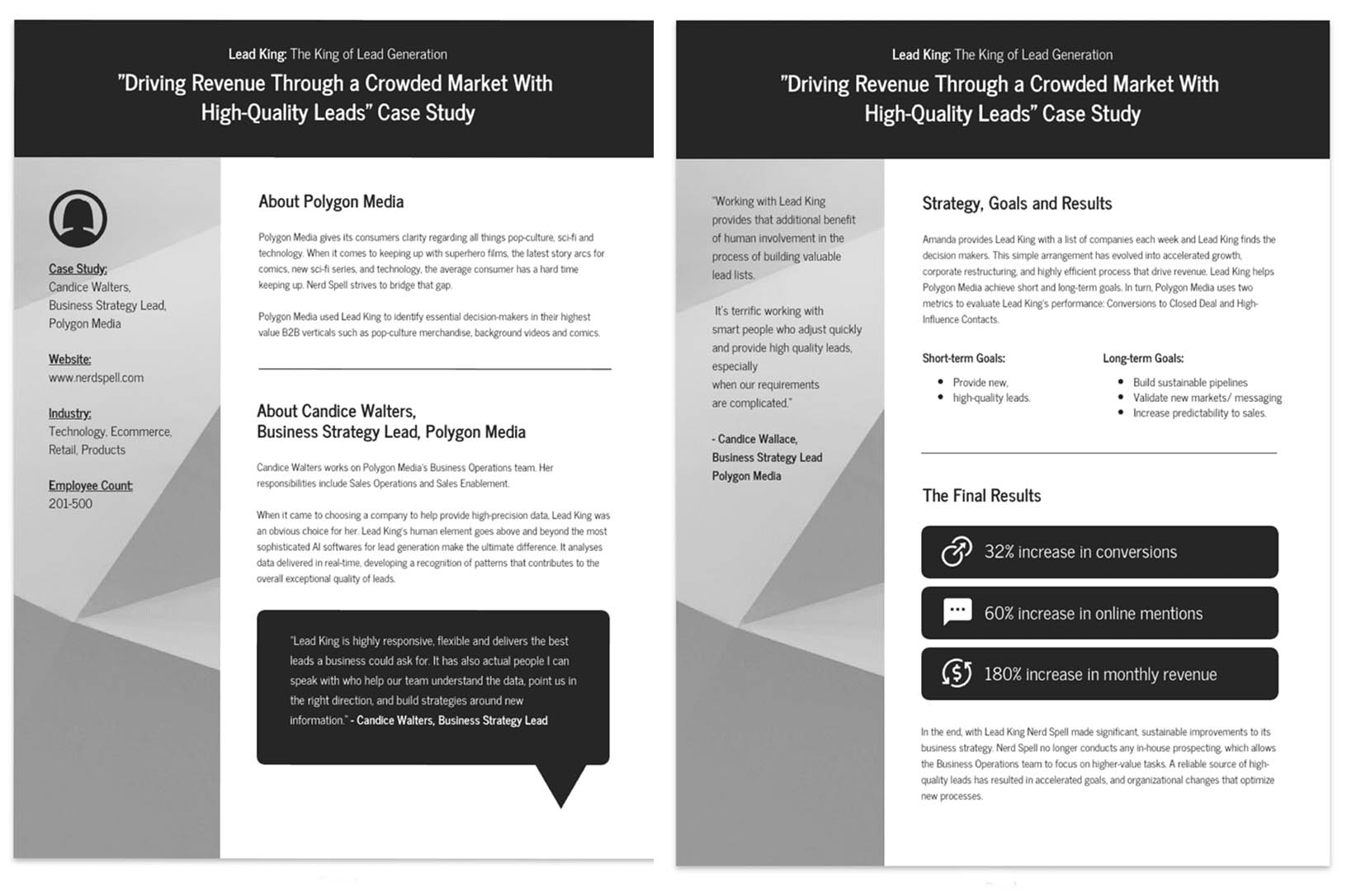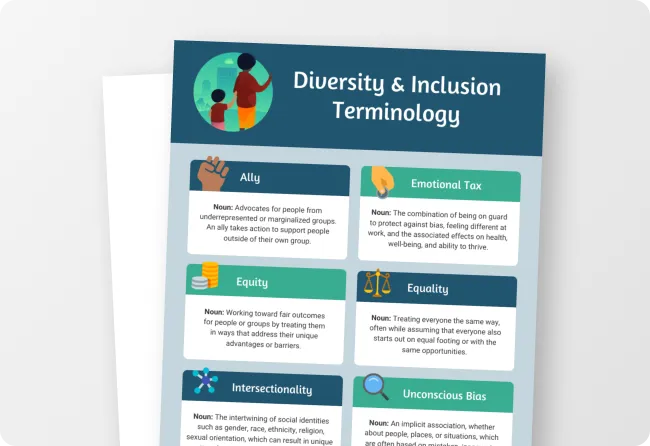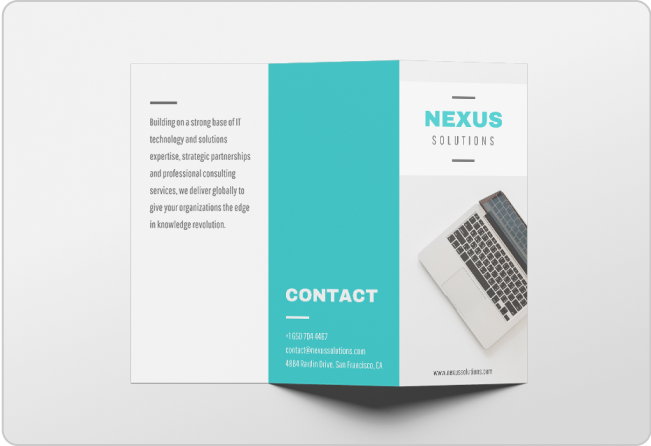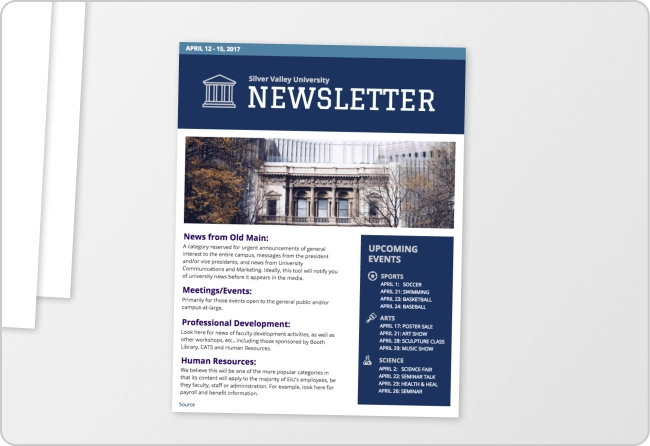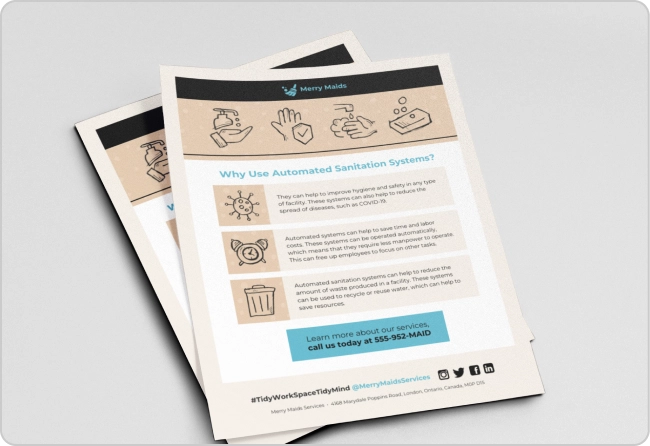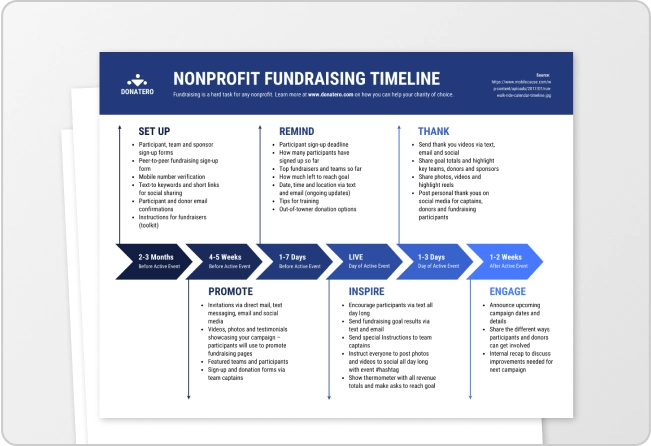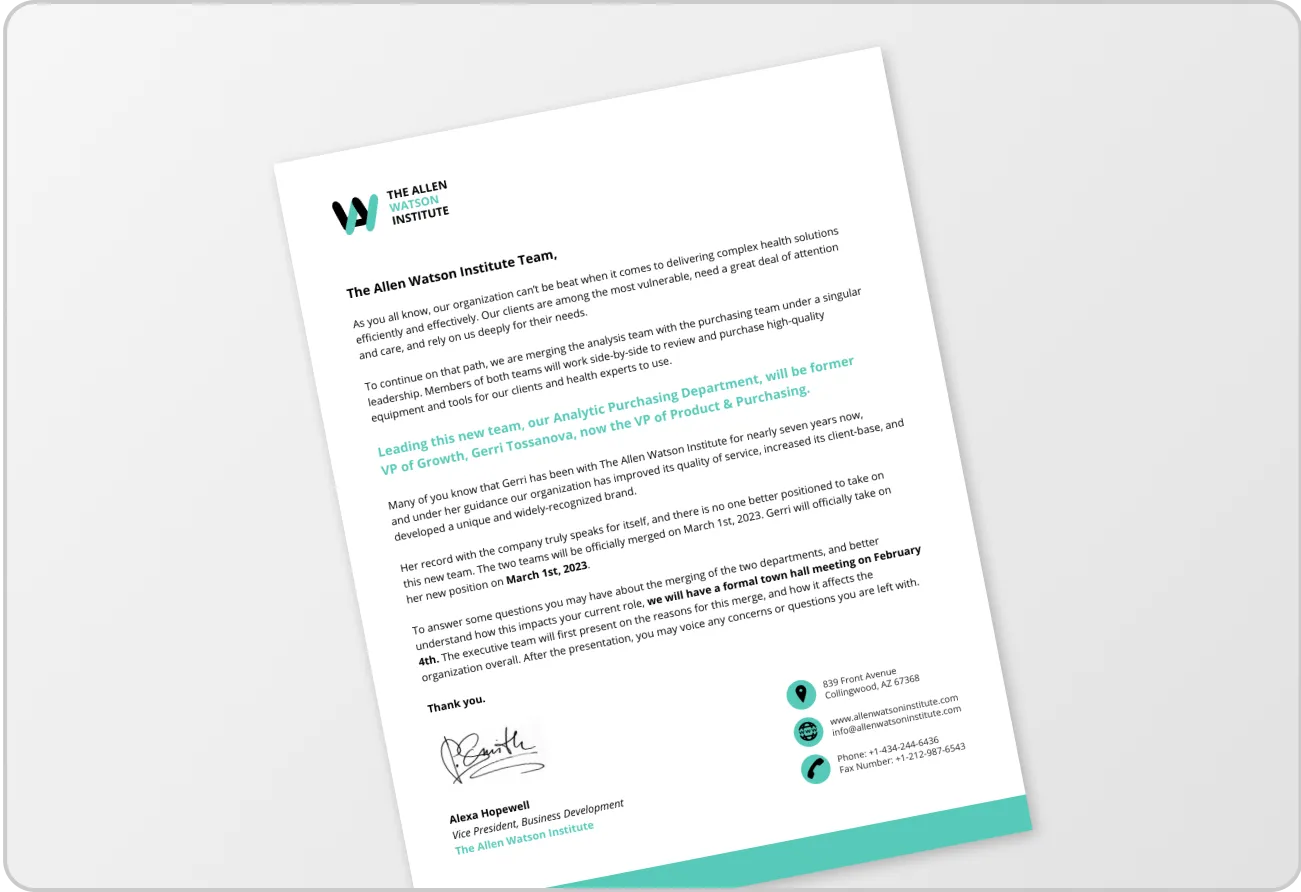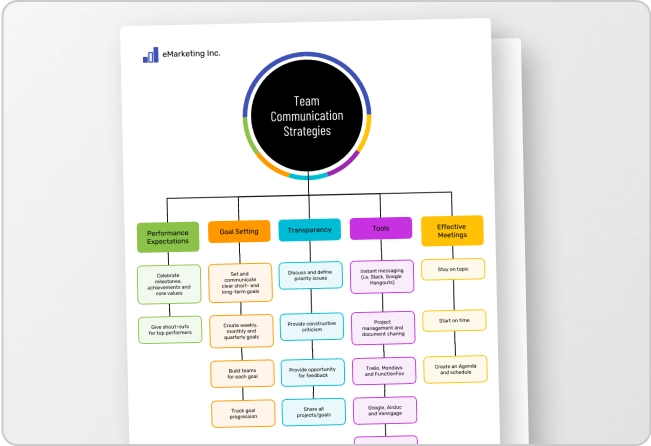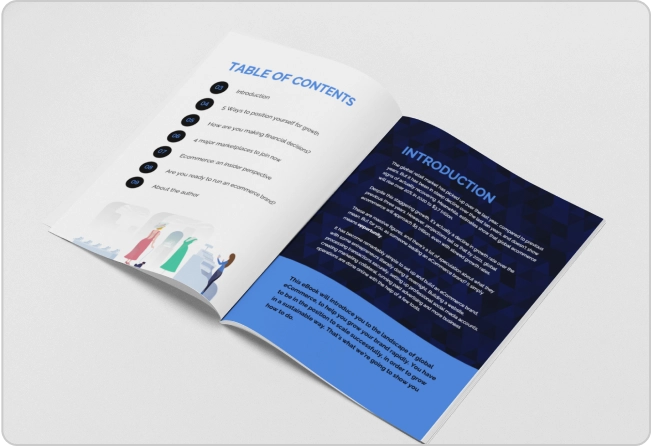
Have you ever bought something — within the last 10 years or so — without reading its reviews or without a recommendation or prior experience of using it?
If the answer is no — or at least, rarely — you get my point.
Positive reviews matter for selling to regular customers, and for B2B or SaaS businesses, detailed case studies are important too.
Wondering how to craft a compelling case study? No worries—I’ve got you covered with 15 marketing case study templates, helpful tips, and examples to ensure your case study converts effectively.
What is a case study?
A case study is an in-depth, detailed analysis of a specific real-world situation. For example, a case study can be about an individual, group, event, organization, or phenomenon. The purpose of a case study is to understand its complexities and gain insights into a particular instance or situation.
In the context of a business, however, case studies take customer success stories and explore how they use your product to help them achieve their business goals. Businesses often use case studies to showcase how their solutions help students improve their writing, research, and academic performance.
As well as being valuable marketing tools, case studies are a good way to evaluate your product as it allows you to objectively examine how others are using it.
It’s also a good way to interview your customers about why they work with you.
Related: 6 Types of Case Studies
What are the case study examples for business, marketing and sales?
Case studies show how businesses tackle challenges and achieve success, from streamlining operations to boosting marketing engagement or closing sales.
In this section, we’ll look at examples from business, marketing and sales to show how these industries use case studies to share what’s effective and drive results.
Business case study examples
Whether you’re a B2B or B2C company, case studies can be a valuable tool for sales, marketing, and even internal training.
A strong business case study should include strategic insights along with real-world examples and qualitative findings, like the ones below.
Conduct a B2B case study by researching the company holistically
When writing a case study, take a holistic approach by analyzing everything from social media to sales. Consider how your product or service has impacted the company’s broader goals and ask for insights on its effects.
Many businesses use case study writing services to ensure high-quality, engaging content that resonates with their audience. A well-researched case study, like the example above, uses visual elements—such as social media and communication icons—to highlight key insights. This format also works well for annual or end-of-year reports.
Highlight the key takeaway from your marketing case study
To create a compelling case study, identify the key takeaways from your research. Use catchy language to sum up this information in a sentence, and present this sentence at the top of your page.
This is “at a glance” information and it allows people to gain a top-level understanding of the content immediately.
Use bold, contrasting fonts to make key information stand out. The heading should feature the most impactful detail, as it’s the first thing readers see.
For example, a stat like “Increased lead quality by 90%” grabs attention and encourages further reading. If conducting an interview, highlight a direct quote or key insight to engage potential customers.
Use charts to visualize data in your business case studies
This consulting case study uses a chart to highlight lead value differences, making the data more visual and engaging.
Charts are an excellent way to visualize data and to bring statistics and information to life. Charts make information easier to understand and to illustrate trends or patterns.
Making charts is even easier with Venngage.
Charts also work well in project management case studies, where Gantt charts or timelines can showcase successful project execution.
Use direct quotes to build trust in your marketing case study
The business case study below uses a bright contrasting speech bubble to show that it includes a direct quote, and helps the quote stand out from the rest of the text.
Adding a direct customer quote enhances authenticity. Research from Nielsen shows that 92% of people trust peer recommendations, and 70% trust those from strangers.
If a client loves your work, capture their praise with a direct quote. Use part of an interview or request a statement—but always get permission. A strong quote grabs attention and can influence potential customers.
Simple case study examples
Less is often more, and this is especially true when it comes to creating designs.
These simple case study examples show that smart clean designs and informative content can be an effective way to showcase your successes.
Use colors and fonts to create a professional-looking case study
A case study doesn’t have to be dull—it should be easy to read and visually appealing. Try using different fonts for headings, complementary colors, and simple icons to highlight key points. This makes the information clearer and more engaging.
In this case study example, we can see how multiple fonts have been used to help differentiate between the headers and content, as well as complementary colors and eye-catching icons.
Marketing case study examples
Marketing case studies are incredibly useful for showing your marketing successes. Every successful marketing campaign relies on influencing a consumer’s behavior, and a great case study can be a great way to spotlight your biggest wins.
In the marketing case study examples below, a variety of designs and techniques to create impactful and effective case studies.
Show off impressive results with a bold marketing case study
Case studies are all about showcasing your successes, so make sure the positive results really pop. Use bold colors, big fonts, and simple icons to highlight key wins.
For example, in the case study below, big achievements are marked with bright colors and circles to grab attention—perfect for marketing case studies that need to catch a potential customer’s eye.
Use a simple but clear layout in your case study
A simple, clean layout works wonders, like in the example below. Using a white background and slim lines to separate sections keeps things clear and easy to follow.
This not only makes key results stand out but also improves accessibility, making it a great fit for larger reports with a consistent design.
Use visuals and icons to create an engaging and branded business case study
Nobody wants to read pages and pages of text. Using icons, graphics, photos, or patterns helps create a much more engaging web design.
In this social media marketing case study, eye-catching icons, colors, and patterns create a visually appealing design.
Use a monochromatic color palette to create a professional and clean case study
Let your research shine by using a monochromatic and minimalistic color palette.
By sticking to one color, and leaving lots of blank space you can ensure your design doesn’t distract a potential customer from your case study content.
In this case study on Polygon Media, the design is simple and professional, and the layout allows the prospective customer to follow the flow of information.
The gradient effect on the left-hand column helps break up the white background and adds an interesting visual effect.
Did you know you can generate an accessible color palette with Venngage? Try our free accessible color palette generator today and create a case study that delivers and looks pleasant to the eye:
Add long term goals in your case study
When creating a case study, consider both short-term and long-term goals to get a full understanding of the company’s progress. Short-term goals focus on immediate achievements, while long-term goals look at future plans.
In this case study example, the short and long-term goals are clearly distinguished by light blue boxes and placed side by side so that they are easy to compare.
Use data to make concrete points about your sales and successes
Stats, facts, and figures are crucial in research, as they help quantify findings. For example, saying sales increased by 10% is more impactful than just saying they increased.
In sales case studies, like this one, key data can be presented with icons, making it easier for potential customers to understand and demonstrating thorough research.
Use emotive, persuasive, or action based language in your marketing case study
Create a compelling case study by using emotive, persuasive and action-based language when customizing your case study template.
This case study example below uses persuasive phrases like “Results that Speak Volumes” and “Drive Sales” to inspire action, much like in a blog post, motivating potential customers to act.
Keep your potential customers in mind when creating a customer case study for marketing
82% of marketers use case studies because they quickly build trust and showcase the value of a product. Case studies prove to potential customers that others trust you too.
For SaaS products, they’re an excellent way to show how businesses are successfully using your tool. In this case, Network demonstrates how Vortex Co. benefited from their product, instantly proving its effectiveness.
Related: 10+ Case Study Infographic Templates That Convert
Sales case study examples
Case studies are particularly effective as a sales technique.
A sales case study is like an extended customer testimonial, not only sharing opinions of your product – but showcasing the results you helped your customer achieve.
Make impactful statistics pop in your sales case study
A case study doesn’t have to be all text. Icons can help highlight key points and make the information easier to digest.
In this example, icons act as visual cues that grab attention and point out the most important details. They are used to highlight growth areas, making them stand out and feel more engaging.
Use high contrast shapes and colors to draw attention to key information in your sales case study
Help the key information stand out within your case study by using high contrast shapes and colors.
Use a complementary or contrasting color, or use a shape such as a rectangle or a circle for maximum impact.
This design has used dark blue rectangles to help separate the information and make it easier to read.
Coupled with icons and strong statistics, this information stands out on the page and is easily digestible and retainable for a potential customer.
What to include in a professional case study
A professional case study showcases how your product or services helped potential clients achieve their business goals. You can also create case studies of internal, successful marketing projects. You can consider leveraging tools like Chat PDF and other AI-driven embeddings to transform static case study documents into interactive experiences.
A professional case study typically includes:
- Company background and history
- The challenge
- How you helped
- Specific actions taken
- Results
- Visuals or Data
- Client testimonials
- Conclusion
Here’s an example of a case study template:
How do you write a business case study?
Writing a case study requires research and revision. You should have a single objective decided before you start writing.
Case studies in marketing, like the below example, are meant to highlight your company’s successes. Choosing a client to showcase is also an important step in the writing process.
Below, we share the top steps to complete when writing a case study to promote your business.
Determine your objective
Before you start writing case studies, decide what the main objective for this exercise is. Case reports don’t have the potential to go viral, nor are they shareable on social media.
But a case study is an effective tool for converting prospects into customers. They can also encourage business partners to take that final step and sign on the dotted line.
You need to approach your case analysis differently than all other content. This is why you need to have an objective for undergoing the process of writing a case study.
For example, this report shows how the fictional company Toy Crates used the services of Ad Factory to significantly increase its sales.
The main objective of your case study is to highlight your business processes. You should also show the benefits of using your product. But there needs to be a relatable angle for whoever is reading your study.
Possible angles for a case study can be:
- Audience growth
- Launch of a new type of product
- Entry into a new market
- Improvements in conversion rates
- Increased revenue
- Increased traffic or social media impressions
- Technology or software adoption
This case study focuses on lead generation. The report showcases the efforts behind boosting the client’s lead generation program and the successes achieved.
Once you determine the best objective for your analysis, you can move onto the next step. Look for a client that best showcases positive aspects of your company.
Choose the right client
You need a particular type of client as the subject of your case study. This client will be a loyal customer. They should be willing to participate in the study. The client should also align with the objective of your study.
Pick a customer who knows your product inside and out. They should not be someone who used your product once and had success with it.
You want to showcase consistent and high-quality results over a period of time. In this example, the fictional Ad Factory also showcased Loot Box as a client that had success with their brand.
You also want to choose customers who have had success directly from using your product. If a brand has seen overall growth and your product was just part of that success, it won’t make for a compelling case study.
Contacting your client for the case study
The customer you choose for your case study should know what the process entails.
Be open in your communication about what you need to put together the case report. This could be communicated through calls, email conversations, or a project management tool.
Set a deadline and share a project timeline so the client knows what the process will look like. Let them know what documentation or statistics you will need for them before you start writing.
Offer something in exchange for participating in the case study. These could be product discounts, a temporary upgrade, a mention in your newsletter, social media, or increased brand awareness.
It is imperative that you let the customer know how their information and data will be used. Tell them if you’re posting the case analysis to your blog, sharing it on YouTube, or sending it to your audience via an email or text subscription service.
Some clients may not want their professional information shared with large audiences, so clarify this step of the process first.
Related: 40+ Timeline Template Examples and Design Tips
Research your case study
Once your client agrees to participate in the case analysis, you can begin researching. Remember the objective of your case study and research the subject accordingly.
For example, we wanted to show how infographics help businesses grow their audience. We contacted our user, ChadSan, who had seen massive growth after adding infographics to their marketing campaigns.
We put our findings into a research infographic along with quotes from the client, charts and graphs.
To do this, we researched the content ChadSan created before and compared their traffic to when they started using infographics.
It’s also important to look at the industry your client is in so you have an idea of what success looks like in that sector.
Client interviews
Conducting interviews with clients is a good way to get information for your case report.
You can hold interviews via video call, which you should record to double-check later or conduct the interview via email.
Email interviews might require follow-ups if you need further clarification on particular questions.
Asking the right questions is crucial during the research phase. You don’t want ‘yes’ or ‘no’ as an answer. You need qualified information and data to build out a case study, like the one below.
For example, we asked our contact at ChadSan for her experience using infographics in her marketing. We also asked about her main challenges, why she had chosen Venngage and the benefits of using Venngage.
This is also the stage when you can ask for concrete examples of how your product benefited your client.
We asked ChadSan to share some examples of the infographics they had created using our templates. This helped show our product in use, further social proof of the advantages of using Venngage infographics.
Create the case study outline
With the client interview completed, gather the data you have and start writing the outline for the case report. Remember the case study format we shared earlier when you’re preparing the outline.
This will help you design a case study that is memorable, like this example.
For a case study blog post, you should prepare the following:
- Title
- Subtitle
- About the company
- Overview of the study
- The results, with charts
- Call to action
Write a few notes for each point that you can elaborate on in the next writing stage. By following this process, you can build out a case study like this example.
Draft your case report
The outline is your starting point for drafting the case report. Like any other piece of content you create, a case study needs to be engaging. It also needs a beginning, a middle and an end.
Use classic marketing storytelling approaches when writing case studies. Introduce your characters (the client), the conflict (the business problem), the resolution (the benefits of your product).
By using this technique, you can write a case study like this example.
Conclude with an analysis of your success and a testimonial recommending your product and brand.
Finalize your case study
Revise your study and ask one or two colleagues to glance over it to catch any mistakes you may have missed.
You should send the report to the client you’re showcasing for their approval. When you and the client are satisfied with the case study, an infographic study like the one below is ready to be published.
Share a link to the case study with the client to promote on their platforms. You can share the case report on your social channels, with partners and to your email subscribers.
How to conduct interviews for a case study
When conducting interviews for a case study, it’s important to gather detailed and relevant information. Here are some actionable tips to guide you:
- Prepare targeted questions – Focus on the challenges the client faced, the solutions implemented, and the outcomes. This will give you the key information needed to structure your case study.
- Use open-ended questions – Ask questions that encourage detailed responses, like “Can you describe how this solution impacted your team?” This will help you gather in-depth insights.
- Record interviews – Always record your interviews (with consent) to ensure accuracy and allow you to refer back to the conversation for follow-up details.
- Get client consent – Before using any quotes or data, make sure you have the client’s permission to include them in your case study. This ensures transparency and builds trust.
Case study examples summary
Once you have created your case study, it’s best practice to update your examples on a regular basis to include up-to-date statistics, data, and information.
You should update your business case study examples often if you are sharing them on your website.
It’s also important that your case study sits within your brand guidelines – find out how Venngage’s My Brand Kit tool can help you create consistently branded case study templates.
Case studies are important marketing tools – but they shouldn’t be the only tool in your toolbox. Content marketing is also a valuable way to earn consumer trust.
FAQs about case studies
Why should you write a case study?
Writing a case study is one of the best ways to show real results and build trust. Instead of just saying what a product or service can do, you’re sharing a real story about how it helped someone. It’s proof that your solution works. Plus, case studies make great marketing tools—they’re relatable, easy to share, and can bring in new leads.
They’re also useful beyond marketing. Case studies can highlight customer success stories, give your team insights to learn from, and even serve as a reference for future projects.
How should you write a case study?
Writing a case study is all about telling a clear, results-driven story. Here’s how to do it:
- Introduce the topic – Briefly introduce the area of focus for the case study.
- State the purpose – Outline why the case study is being written and what you hope to demonstrate.
- Outline the key issues – Highlight the main challenges or findings without diving into specific details.
- Identify the theory used – Mention the frameworks or theories that guided the analysis.
- Summarize recommendations – Conclude with any key recommendations or lessons learned.
You can learn more about writing a case study from our extensive guide, which covers everything from research to presentation. Plus, check out our article on how to present a case study to learn tips and examples for showcasing your work like a pro.
Related: How to Present a Case Study like a Pro (With Examples)
How long does it take to write a case study?
Writing a case study takes a lot of planning and prep. Some can take 3-6 months, while others might go on for years. The time it takes really depends on things like research, interviews, and revisions. A simple case study could be done in a few hours or a day, but a more detailed one with data analysis and customer interviews might take a week or more. The tricky part is balancing depth with efficiency—getting the right insights, telling a clear story, and refining everything so it’s easy to understand.
What is the best format for a case study?
The best format for a case study is one that’s clear, structured and easy to follow. Here’s a simple format you can use:
- Title – A concise, attention-grabbing headline.
- Introduction – Briefly introduce the client or project and the challenge faced.
- Problem – Explain the specific issue or pain point that needed solving.
- Solution – Describe how your product, service, or strategy addressed the problem.
- Results – Share measurable outcomes, data, or key takeaways to highlight success.
- Conclusion – Wrap up with a summary of the lessons learned or broader implications.
Can you write a case study in first person?
When writing a case study that involves theories, research, or other external parties, it’s important to use the third person to maintain a professional and objective tone. This means referring to people or entities using names, pronouns (he/she/they) or titles like “the client” or “the counsellor.”
You might also enjoy:
































